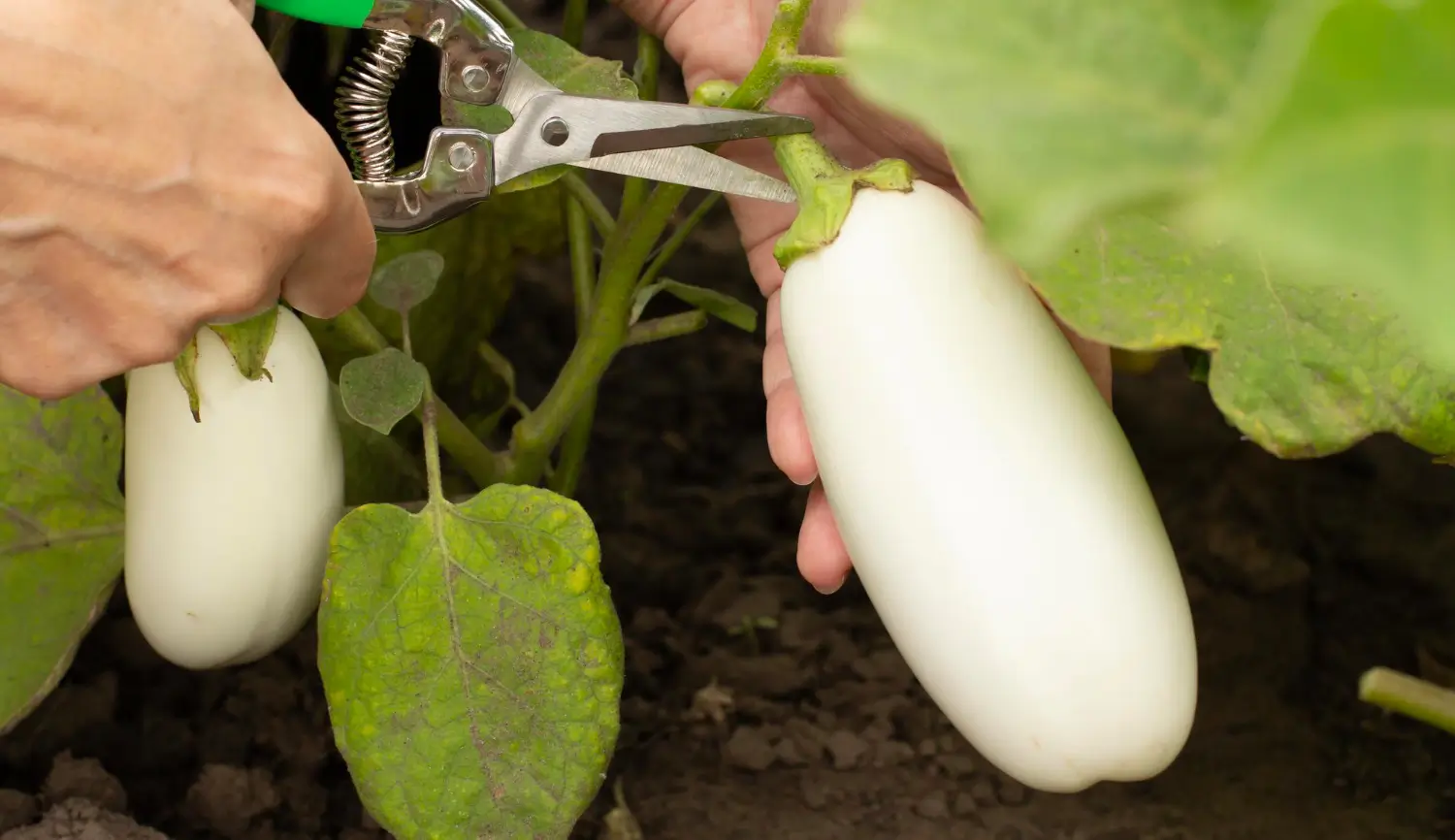
August 24, 2025

Home gardening is a good hobby, but it often comes with challenges. Many gardeners find it hard to grow certain vegetables because of specific needs like soil type, climate, or care. For example, tomatoes can be affected by blight, leafy greens often attract pests and root vegetables need deep, loose soil, which can be difficult to create in small spaces. These problems can frustrate gardening, especially for beginners or those with limited time.
Squash provides an excellent solution. It is one of the most adaptable and productive crops, making it a great choice for home gardens. There are two main types of squash: summer squash, which is picked when it is young and tender, and winter squash, which matures into a hearty vegetable that can be stored and used in dishes like soups and stews.
Growcycle provides helpful gardening tools and techniques to grow squash plants easily in home gardening. This blog highlights the differences between summer and winter squash and how to care for each.
Squash is a valuable and healthy plant belonging to the Cucurbitaceae family, including cucumbers, melons, and pumpkins. These plants produce fruits that grow on vines or bush-like plants. Squash is thought to have originated in the Americas and has been cultivated for thousands of years for food and medicine.
Squash can be divided into two main types: summer squash and winter squash. Each type has special qualities that make it better for certain cooking methods and growing conditions.
Squash comes in many types and is mainly divided into two categories. Each category has different varieties with unique flavors, textures, and uses.
| Type of Squash | Example | Description | Best Uses |
|---|---|---|---|
| Summer Squash | Zucchini | A popular variety with smooth, dark green or yellow skin. | Grilling, sautéing, or baking. |
| Pattypan | Has scalloped edges and comes in yellow, green, or white. | Stuffing or roasting. | |
| Yellow Squash | Has bright yellow skin and a curved or straight neck. | Works well in many dishes. | |
| Winter Squash | Butternut Squash | Known for its creamy texture and sweet, nutty flavor. | Soups, purees, and roasting. |
| Acorn Squash | Shaped like an acorn, with a dark green rind and orange marks. Has a mildly sweet flavor. | Baking or stuffing. | |
| Spaghetti Squash | When cooked, the flesh turns into strands that resemble spaghetti. | Low-carb pasta alternative. |
Squash plants grow best in warm, sunny areas with well-draining soil. They are usually annuals that live for one growing season before dying.
Choosing the right squash for the garden depends on several factors, including climate, available space, and gardening experience. Here is a guide to help make the best decision:
Summer squash thrives in warm, sunny climates with temperatures between 70°F and 85°F (21°C to 29°C). It is a fast-growing plant that does well in regions with a long growing season. Because it does not tolerate frost, it should be planted after the last frost of spring. If your area has mild winters, summer squash can be grown in early spring or late summer for a second harvest.
Winter squash requires a longer growing season and even warmer temperatures, typically between 75°F and 90°F (24°C to 32°C). Unlike summer squash, winter squash is planted later in the season and needs longer to mature. It is best suited to hot summer and cool fall areas, where it can ripen before the first frost.
Vining squash (such as zucchini or pumpkins) requires more space to spread out. These varieties can grow long, sprawling vines that need ample room to spread across the ground or up trellises. For vining squash, a garden bed with at least 4 to 6 feet (1.2 to 1.8 meters) of space is recommended between plants to allow for proper growth and airflow.
Bush varieties (certain types of acorn squash) are more compact and grow in a bush-like form. These plants are ideal for smaller gardens, as they need less space, typically around 2 to 3 feet (0.6 to 1 meter) between plants.
Planting squash successfully requires careful preparation. Here are the essential steps to ensure squash plants grow healthy and produce a good yield:
Summer squash should be planted in the spring after the last frost. Depending on the location, this usually means planting seeds or seedlings around late April to early May. If the growing season is short, start seeds indoors for the best yield, and then transplant seedlings into the garden after the last frost.
To reach full maturity, winter squash needs a longer growing season, typically 90 to 120 days. It should be given plenty of time to mature and fully ripen before the first fall frost, so it's crucial to plant early enough in the season to allow for this. If the growing season is shorter, consider starting seeds indoors.
Squash plants grow best in well-draining, loamy soil rich in organic matter. The soil should be slightly acidic to neutral pH, ideally between 6.0 and 7.5. Because squash plants have deep roots that need space to grow, the soil should be loose and crumbly to allow for root expansion. To prepare the soil, loosen it by digging or tilling and remove any weeds or debris. Adding compost will improve soil structure and provide essential nutrients.
Starting squash seeds from seeds is a cost-effective option that allows gardeners to control their varieties. Squash seeds germinate quickly, and growers can start them indoors for a head start on the growing season.
Transplants give plants a head start, which can be particularly beneficial in shorter growing seasons. Seedlings are easier to manage and reduce the time it takes for squash to mature.
Starting squash seeds indoors can give plants an early start, which is helpful in cooler climates or areas with short growing seasons. Here is how to grow squash indoors:
Start Seeds Indoors for an Early Start
Taking care of squash plants involves providing the right conditions for growth, keeping them healthy, and managing pests. Here is a simple guide to help care for squash plants:
Squash plants need consistent moisture, especially during hot, dry periods. Water the plants deeply to encourage deep root growth and keep the soil evenly moist. Water early in the day to prevent fungal diseases and to give the plants time to dry out before evening.
Overwatering can cause root rot and other problems. Ensure the soil drains well and that water doesn't pool around the plant’s base.
Squash plants are heavy feeders, so they need regular fertilizing to grow strong and produce fruit. Use a balanced fertilizer that contains nitrogen, phosphorus, and potassium, or choose a fertilizer high in phosphorus to encourage flowering and fruiting.
For summer squash, a balanced, all-purpose fertilizer works well. Apply it about 2–3 weeks after planting, then reapply every 4–6 weeks.
For winter squash, a higher potassium and phosphorus content fertilizer can help with fruit production. Apply the fertilizer when the plants begin to vine out and then again during fruit formation.
Vining squash varieties, such as pumpkins or certain types of zucchini, benefit from support. Installing a trellis allows the vines to grow upward rather than sprawling on the ground. This saves space, helps keep the plants healthy, and makes harvesting easier. Choose a sturdy trellis or fence that can support the weight of the growing squash.
To train the vines, gently tie them to the trellis using soft garden ties. Prune the vines as needed to encourage vertical growth and avoid overcrowding.
Harvesting squash at the right time and with care ensures the best flavor and shelf life. Here is how to know when the squash is ready to pick and how to handle it properly:
Summer Squash
Winter Squash
Squash is a versatile vegetable that can be used in many ways in daily life. Here are some common uses:
Which squash is easiest to grow?
Zucchini (a type of summer squash) is one of the easiest types to grow due to its fast growth and low maintenance.
How long does a squash take to grow?
Depending on the variety, summer squash typically takes 50–60 days to grow, while winter squash can take 80–110 days.
Can you grow a squash plant indoors?
Yes, squash can be grown indoors with enough sunlight, space, and proper care. However, once the weather warms up, it is best to start them indoors and transplant them outside.
Growing squash at home offers unique flavors, textures, and uses for the kitchen. Gardeners can enjoy a productive harvest by understanding the differences between the types of squash, preparing the soil, and caring for the plants with attention to watering, fertilizing, and pest management.
With the right climate, space, and care, squash can thrive in most home gardens. Explore Growcycle to learn more about the home growing squash varieties.
Disclaimer: This material is for informational purposes only and should not be relied on for legal, medical, financial, or any other form of professional advice.